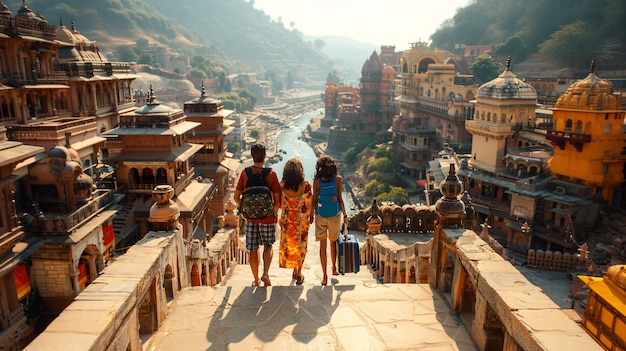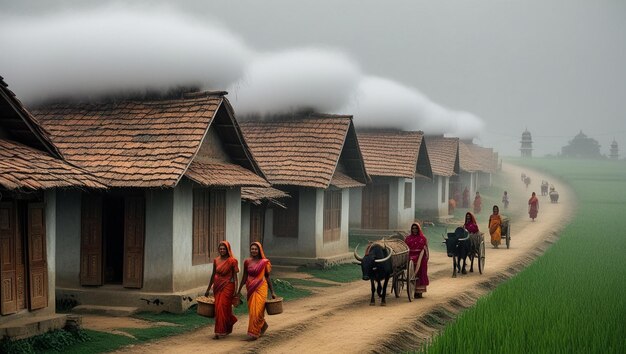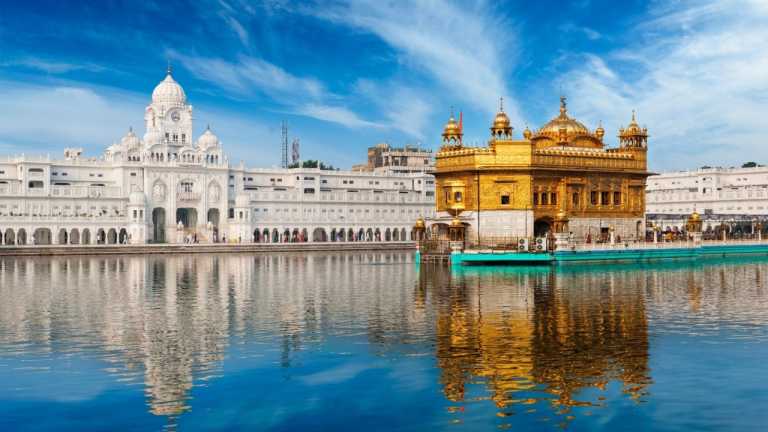The Punjab government has taken major steps to boost the villages and the local culture of Punjab. The state has approved a 2800 crore plan aimed at making tourism a strong pillar of the rural economy.
The move was cleared in a recent cabinet meeting and marks the biggest-ever investment in Punjab’s tourism and heritage sector.The aim is to bring life back to the villages, open new doors for income, and help preserve what makes Punjab special.
Villages to Welcome Visitors
The state is putting its villages at the centre of this plan. It wants people from across India and abroad to come and see how Punjab lives on farms, in fields, with simple food and warm hospitality.

To achieve that, the government will help farmers turn parts of their homes and land into small tourist stays. These farm stays will offer visitors a real taste of village life like fresh food, green fields, tractor rides, and maybe even a chance to milk a cow.
Hansali village in Fatehgarh Sahib district already showed what’s possible. Last year, it was named one of India’s best tourism villages. Now, many more villages are expected to follow.
Fixing Old Sites, Telling Old Stories
Alongside the push for farm tourism, the government will also focus on old buildings, forts, and landmarks. These places carry stories of Punjab’s past, some glorious while some painful. But many have been left to decay. Now, with this funding, sites like Jahaz Haveli and Sarai Lashkar Khan will be repaired.
Sikh history museums in places like Khatkar Kalan and Ferozepur will also be revamped. Visitors will soon find better lighting, guides, and clean spaces to explore. The state wants to make history more accessible not only for tourists but also for students and locals who may not have seen these places in years.
Empowering Towns and Making Jobs
This speculation is anticipated to make thousands of coordinate and roundabout occupations in neighborliness, transportation, crafted works, and neighborhood administrations.
A key objective is to decrease relocation from country zones by advertising youthful individuals economical work openings in their possess communities. Preparing programs will be propelled to bolster provincial has, artisans, and little commerce proprietors beneath the unused tourism policy.
Fun by the Water
Tourism won’t just stop at history and farms. The state also plans to open up its rivers and lakes for boating, fishing, and light adventure activities. Places like Chamkaur Sahib and Ropar are being looked at for these water-based attractions.

These are meant to draw in young travelers and families looking for something fun and different.They’ll also create new jobs for boat operators, guides, and food vendors.
What It Means for Locals?
Farming has become tough for many villagers in Punjab. Prices are unstable, and many families are sending their children to cities or even abroad in search of work. Tourism opens new opportunities for income. With more people visiting, local businesses flourish.
They can sell homemade pickles, crafts, or offer tours. Young people might choose to become hosts, guides, or run cafes. Small changes like these can slowly shift the village economy. With new roads, clean toilets, and better waste systems being built for tourists, life will improve for residents too.
Reaching Out to Investors
The state isn’t doing this alone. Officials have been meeting with private investors and showing them what Punjab has to offer. Events like the India International Trade Fair have helped spread the word. The idea is to build together. The state brings the plan, and the private players will bring money, skills, and services.
What’s Next?
Work will begin in steps. First, the villages in and around key heritage zones will get road and sanitation upgrades. Then, the farm stays and museum makeovers will begin. The first water tourism zones could be ready by the end of this year.
This entire mission is being led by the tourism department with close support from Chief Minister Bhagwant Mann’s office. If it goes as planned, Punjab’s villages may soon be not just places people leave, but places others come to see and celebrate.
Cultural Tourism as the Center Focus

The government will resuscitate key legacy courses such as the Anandpur Sahib–Kapurthala passage and the social belt of Malwa. Conventional celebrations and fairs will get unused subsidizing to highlight Punjabi traditions and fables. A solid advanced showcasing campaign is moreover arranged to pull in both household and universal tourists.
By contributing 28 billion into provincial tourism, Punjab is not as it were protecting its social roots but moreover building a more economical and self-reliant provincial economy. This strong move positions the state as a pioneer in grassroots tourism advancement in India.












